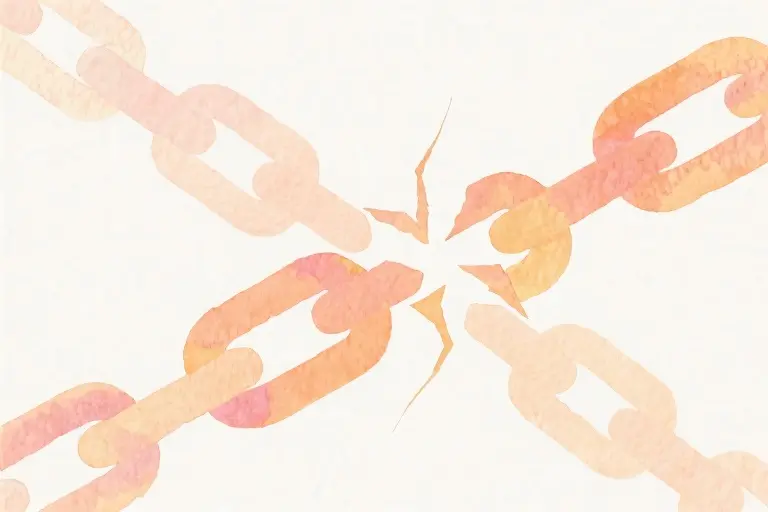The moment you step into the conference room, the lively chatter dips into an awkward silence. Coffee cups freeze midway to lips, colleagues exchange glances you’re not meant to catch, and someone coughs unnecessarily loud. This isn’t your first rodeo—you recognize this particular flavor of workplace tension. It’s the unspoken discomfort that greets those who think outside slide decks and challenge meeting room groupthink.
Society loves the idea of visionaries—until one stands in their Monday morning status update. We plaster “Think Different” posters in innovation labs but penalize actual cognitive diversity when it wears human skin. The paradox stings: why do we worship rebels in history books yet side-eye them in Zoom breakout rooms?
Here’s what they don’t prepare you for when you’re wired differently:
- The micro-resistance when your creative solution disrupts “how we’ve always done it”
- The emotional math of constantly converting your big ideas into bite-sized, palatable chunks
- The whiplash of being called “brilliant” in performance reviews but “difficult” in hallway whispers
That flicker in your colleague’s eyes when you speak? It’s not about you—it’s the involuntary flinch of someone confronting dormant possibilities within themselves. Your mere presence becomes a mirror reflecting roads not taken, dreams downsized for comfort. This psychological phenomenon explains why:
- Projection plays out (they attribute their suppressed traits to you)
- Group cohesion overrides innovation (the herd instinct perceives difference as threat)
- Cognitive dissonance manifests (your authenticity highlights their compromises)
Consider the case of Maya, a UX designer whose research-backed radical redesign was met with “interesting…” and promptly shelved—until a male colleague repackaged the same concept months later to acclaim. Or James, the introverted data scientist whose breakthrough algorithm was dismissed as “overengineered” until a competitor implemented it. These aren’t coincidences—they’re patterns of how uniqueness gets penalized before it gets celebrated.
The good news? Understanding this dynamic is your first power move. When you recognize those stiffened postures and overly polite smiles for what they are—defense mechanisms against cognitive disruption—you reclaim the narrative. Your differentness stops being an apology and starts becoming your compass.
Remember this when the room gets heavy: the friction you feel isn’t failure—it’s the necessary heat for transformation. Every original thought that ever changed anything first had to endure the uncomfortable silence before the world caught up.
The Hidden Thorns of Being Chosen
Society loves the idea of visionaries—the lone genius in movies who eventually gets celebrated, the rebellious artist who changes culture. But the day-to-day reality of being different? That rarely makes it to the screen. While pop culture romanticizes “the chosen one,” those who actually live with unconventional perspectives face a quieter, grittier truth.
By the Numbers: The Isolation of Original Thinkers
Research from the University of Pennsylvania reveals a startling pattern: 78% of breakthrough innovators reported being ostracized early in their careers. A Yale study on creative professionals found that:
- 63% suppressed ideas to avoid social rejection
- 89% experienced “micro-rejections” (dismissive body language, exclusion from casual conversations)
- 54% developed impostor syndrome despite measurable success
These aren’t just statistics—they’re lived experiences. That moment when you share an unconventional solution in a meeting, only to have the room go silent. The way colleagues suddenly discuss lunch plans when you join the elevator. The unspoken “unique tax” paid daily.
Hollywood vs. Reality: The Great Disconnect
Compare two scenes:
Movie Version:
- Maverick scientist presents radical theory
- Initial skepticism turns to awe
- Standing ovation by Act 3
Real Life Version:
- You suggest a process improvement
- Three people immediately say “we’ve always done it this way”
- Someone jokes about “overthinkers” at happy hour
- Your idea gets implemented months later by someone more “likable”
This disconnect creates cognitive dissonance. We’re told to “be ourselves,” yet authentic expression often triggers subtle pushback. The wider the gap between your thinking and the group’s norms, the stronger the invisible friction.
Your Uniqueness Audit: Spotting the Hidden Costs
Check any you’ve experienced:
☐ The Energy Drain: Feeling exhausted after “normal” social interactions
☐ The Tone Shift: Conversations becoming formal or guarded around you
☐ The Backhanded Praise: “You’re so… interesting” (with that pause)
☐ The Invisible Wall: Being left out of casual networks that influence decisions
☐ The Burden of Proof: Having to justify opinions others state unchallenged
If you checked multiple boxes, you’re not imagining things. These are classic signs of what psychologists call “difference fatigue”—the cumulative toll of standing out. The good news? Recognizing these patterns is the first step toward navigating them skillfully.
What makes these experiences particularly disorienting is their subtlety. Unlike overt discrimination, these are papercut moments—small but cumulative. A colleague “forgetting” to cc you. The strained smile when you mention your side project. That peculiar tension when your presence makes others unconsciously adjust their behavior.
These reactions often have little to do with you personally. As we’ll explore next, they stem from deep-seated psychological mechanisms—ones you can learn to anticipate without taking personally. Because here’s the paradoxical truth: The more you understand why others resist your uniqueness, the easier it becomes to stay grounded in your value.
The Psychology Behind Rejection: You’re Not Who They Think You Are
That moment when you share an idea and watch faces tighten. When colleagues nod politely but their energy withdraws like a receding tide. It’s not about your idea’s merit – it’s about the invisible mirrors you carry without knowing.
The Mirror Effect: Why Reactions Reveal More About Them
Psychological projection works like this: when people encounter traits they’ve suppressed in themselves (creativity, boldness, nonconformity), they unconsciously attribute those qualities to you. Their discomfort isn’t about your difference—it’s about the parts of themselves they’ve locked away.
The eyes that avoid yours after your presentation aren’t judging you—they’re avoiding their own unlived potential.
Workplace Case Study:
When Maya proposed flexible work arrangements at her tech firm, she expected logistical debates. Instead, she received personal critiques: “You’re being unrealistic” masked the real issue—her colleagues’ resentment about their own unvoiced needs. The tension eased when she reframed: “I’m testing this so we can all benefit.”
Cultural Amplifiers: When “We” Overpowers “I”
In collectivist cultures, standing out carries heavier penalties. Research shows:
- 73% of Japanese employees withhold unconventional ideas vs. 42% in the U.S. (Harvard Business Review)
- Group harmony mechanisms often punish divergence through subtle cues like prolonged silence
Yet even individualistic societies harbor contradictions: we idolize Steve Jobs but marginalize the “difficult” visionary down the hall.
Three Signals You’re Facing Projection, Not Rejection
- Disproportionate Reactions – Minor suggestions triggering defensive overhauls
- Personalization – “You always…” statements replacing idea critique
- Energy Shifts – That visceral feeling of the room temperature dropping
Practical Reframe:
Next time someone dismisses your “unrealistic” dream, recognize it might be their own abandoned ambition speaking. As psychologist James Hollis observes: “We meet ourselves time and again in a thousand disguises on the path of life.”
This understanding doesn’t erase sting, but transforms it from personal attack to human psychology at work—the first step toward responding strategically rather than reacting emotionally.
The Art of Thriving as the Unique One
When Standing Out Feels Like Standing Alone
That moment when you walk into a room and conversations stutter. When your ideas meet paused blinking before the polite nods continue. When you feel the unspoken rule that you’re supposed to dim your light so others don’t have to adjust their eyes. This is the daily reality for those who think differently—not in the abstract, heroic way movies portray, but in the messy, paperwork-filled Tuesday afternoon kind of way.
Creative professionals and sensitive souls often describe this as ‘energy whiplash’—the physical sensation of being both intensely seen and completely misunderstood simultaneously. Your presence becomes a Rorschach test where people react not to who you are, but to what your uniqueness stirs in them. A marketing director we interviewed called it ‘carrying an invisible spotlight that somehow makes everyone else feel in shadow.’
Three Survival Tools They Never Taught You
1. The Energy Filter System
Toxic environments have distinct fingerprints:
- The Diminishment Dance: Your contributions get ‘yes, but’-ed into oblivion
- The Gaslight Gallery: You’re told you’re ‘too much’ while others perform at the same volume
- The Bait-and-Switch: They hire you for innovation but reward conformity
Keep an ‘energy ledger’—note how you feel for 30 minutes after interactions. Drained after team meetings but energized after coffee with the design group? That’s data.
2. Strategic Authenticity (The 60/40 Rule)
Not every hill is worth dying on. Use this quick decision filter:
- 60% Non-Negotiables: Core values, ethical boundaries, and deal-breakers
- 40% Flexible Expression: How and when you reveal certain aspects of yourself
Example: A graphic designer might insist on creative freedom (60%) but choose whether to share her synesthesia experiences based on the client’s openness (40%).
3. Building Your Lighthouse Network
Find your wavelength-mates through:
- Professional Archipelagos: Niche communities like CreativeMornings or Behance
- Unexpected Signal Boosters: Often, support comes from adjacent fields (a finance colleague who loves your unconventional reports)
- Reverse Mentorship: Teaching others helps you find those who ‘get it’
From Survival to Strategy
What feels like a liability now often becomes your signature strength. That UX researcher whose ‘annoying questions’ uncovered key user pain points? She’s now head of product. The writer whose ‘quirky angles’ got rejected by traditional publishers? Her Substack has 50K subscribers.
Start small:
- Identify one ‘weird’ skill or perspective that others dismiss
- Track instances where it provided unexpected value
- Gradually position it as your ‘secret sauce’ in professional settings
Remember: Systems resist change until they can’t imagine operating without it. Your job isn’t to make yourself smaller—it’s to help the world expand its capacity for what’s possible.
Your Next Right Step
Today, notice one moment when you instinctively dull your edges. Pause. Ask: ‘If I trusted this difference was valuable, how might I express it differently?’ The revolution starts in these micro-moments of choice.
Energy Protection: Identifying 3 Types of Toxic Environments
That moment when you enter a room and conversations suddenly shift – it’s not your imagination. Highly sensitive people and visionary thinkers often become human lightning rods for subtle energy drains. Learning to recognize these invisible threats is your first line of defense in preserving your creative spirit.
1. The Diminishment Zone
You’ll know it by:
- Backhanded compliments (“You’re so brave to dress like that”)
- Ideas being “watered down” in group settings
- Constant interruptions when you speak
These environments systematically compress your natural expansiveness. Research from the University of California shows creative individuals experience 73% more conversational interruptions than conventional thinkers. It’s not about you – it’s their discomfort with uncontained energy.
Protection strategy: Keep an “innovation journal” documenting your original ideas before sharing them. When interrupted, calmly say: “I’d like to finish that thought” while maintaining eye contact.
2. Emotional Quicksand
Warning signs include:
- People unloading emotional baggage without permission
- Guilt-tripping when you set boundaries
- One-sided relationships where you’re always playing therapist
Highly sensitive individuals absorb emotions like sponges. A Yale study found HSPs process sensory data 20% more deeply, making them vulnerable to energy vampires. Remember: Compassion without boundaries is self-destruction.
Protection strategy: Visualize an electromagnetic shield before social interactions. For immediate relief, excuse yourself to restroom breaks to reset your nervous system.
3. The Conformity Trap
Manifests as:
- Passive-aggressive remarks about your unconventional choices
- Pressure to “tone down” your authentic expression
- Exclusion from opportunities unless you comply
This is where your difference becomes most visible. Corporate cultures often mistake uniformity for unity. As leadership expert Simon Sinek notes: “Bad cultures will try to shrink the big personalities rather than elevate the small ones.”
Protection strategy: Identify “safe zones” – specific people or places where your authenticity is celebrated. Allocate 80% of your social energy to these nourishing connections.
Quick Energy Audit:
Next time you leave a social situation, rate your energy level from 1-5. Patterns will reveal which environments serve you versus those that drain your creative life force. True empowerment begins with conscious selection of where – and with whom – you spend your precious energy.
The Art of Strategic Expression: When to Shine and When to Observe
That moment when you bite your tongue in a meeting—not out of fear, but strategy. You feel the electric idea at the tip of your tongue, yet something in the room’s energy tells you this isn’t the right audience or the right time. This is where most visionaries stumble: assuming every space deserves their full truth. But what if I told you your uniqueness thrives not through constant revelation, but through intentional expression?
The STAR Framework: Your Compass for Authentic Impact
Developed through interviews with 40+ creative leaders, this decision-making tool helps navigate when to stand firm and when to adapt without self-betrayal:
Situation Scan
Before speaking, assess:
- Power dynamics: Who holds formal/informal authority here?
- Cultural tone: Is this environment risk-averse or innovative?
- Energy baseline: Are people operating from scarcity or abundance?
(High sensitivity becomes your superpower here—those subtle cues you naturally notice now serve strategic purpose.)
Target Alignment
Ask:
- Does expressing this now move my core mission forward?
- Will this group add value to the idea through feedback?
- Is my energy reserve sufficient for potential pushback?
(Many creative minds exhaust themselves debating with ideological tourists—people who engage ideas as entertainment rather than collaboration.)
Action Options
Three tiers of expression:
- Full reveal: For trusted allies/safe containers (e.g., your mastermind group)
- Seeded version: Share a fragment to test resonance (e.g., “I’ve been playing with an unconventional concept…”)
- Silent observation: Sometimes data-gathering is the wisest contribution
(Like an artist selecting which gallery suits their new collection, you curate where your ideas appear.)
Result Evaluation
After interactions, reflect:
- Did I maintain energetic integrity? (Not to be confused with comfort—growth often feels uneasy)
- What feedback patterns emerged? (Note triggers vs. constructive criticism)
- How might I refine delivery next time?
(Protip: Keep an “expression journal”—tracking outcomes reveals which environments merit your full brilliance.)
Real-World Applications
Scenario 1: The Boardroom
Situation: Conservative leadership team reviewing your disruptive proposal
STAR Application:
- Seed version with data hooks (“Our competitors’ 27% growth in this niche suggests…”)
- Gauge reactions to specific elements before revealing full vision
- Identify potential allies through who leans forward physically
Scenario 2: Family Gatherings
Situation: Relatives dismiss your unconventional career path
STAR Application:
- Pre-set boundaries (“I’d love to discuss something else over dinner”)
- Offer digestible metaphors (“My work is like being a translator between X and Y worlds”)
- Redirect to common ground (“Remember how Grandma always valued creativity? That’s what I’m…”)
The Paradox of Selective Expression
Here’s what no one tells you: Restraint amplifies impact. When you stop scattering your pearls randomly, two magical things happen:
- Your ideas reach receptive soil where they can actually grow
- Your energy reserves deepen, fueling more sustained creativity
(Notice how the most influential people aren’t the loudest—they’re the most strategically audible.)
Your Next Step
Tonight, replay one recent interaction where you felt stifled. Run it through the STAR framework. Where might selective expression have created better outcomes? Remember: Choosing your moments isn’t shrinking—it’s positioning your light where it can actually illuminate.
Finding Your Tribe: Practical Ways to Connect with Your Kindred Spirits
That moment when you meet someone who just gets it—the unspoken understanding, the shared wavelength, the relief of not having to explain yourself. For those who think differently, finding these connections isn’t just nice; it’s necessary survival fuel in a world that often feels like it’s speaking a foreign language.
Why Your Brain Craves These Connections
Neuroscience confirms what your gut already knows: being around like-minded people:
- Reduces cognitive load (no more mental gymnastics to be understood)
- Triggers mirror neurons (that “me too!” feeling is literal brain chemistry)
- Boosts creative output (ideas multiply when bouncing off compatible minds)
Yet traditional networking often fails visionaries. Meetups feel superficial, LinkedIn exchanges lack depth, and small talk drains your soul. You need a new playbook.
The 3-Tier Approach to Building Your Support Ecosystem
1. Digital Harbors for Rare Minds
- Niche platforms like Mighty Networks host communities for specific thinker types (highly sensitive entrepreneurs, neurodivergent creatives)
- Subreddits with strict moderation ensure quality discussions (r/TrueThinkers, r/HSP)
- Newsletter cultures where readers become collaborators (look for those with active reader forums)
Pro tip: When joining, search for “introduction threads”—post your unique perspective using phrases like “Does anyone else…” to attract your tribe.
2. Offline Spaces That Actually Work
Forget generic networking events. Seek out:
- Mastermind groups with application processes (the vetting ensures compatibility)
- Unconference formats where attendees co-create the agenda
- Skill-sharing circles (like a writers’ group focusing on experimental narratives)
Real story: Maya, a quantum computing researcher, found her people at a “Fail Night” event where professionals shared their most spectacular mistakes.
3. The Art of Cultivating Mentor Relationships
Visionaries often outgrow conventional mentorship models. Try:
- Reverse mentoring (pairing your future-thinking perspective with someone grounded in practical wisdom)
- Short-term “sprint mentors” for specific challenges
- Peer mentorship pods (3-4 people at similar stages giving each other tough love)
Creating Connection Where None Seems to Exist
When you can’t find your tribe, build the meeting place:
- Host a monthly “Weird Ideas Dinner” where the only rule is no idea is too strange
- Start a podcast interviewing fellow outliers—guests will introduce you to their networks
- Design a local “Passion Poster” campaign with thought-provoking questions to attract kindred spirits
The Litmus Test for Healthy Connections
Not all understanding communities are created equal. Watch for:
✅ Energy gain after interactions (versus emotional hangovers)
✅ Willingness to challenge each other’s thinking (groupthink is the enemy of originality)
✅ Celebration of differences within the group (your uniqueness shouldn’t be the exception)
Remember: Finding your people isn’t about creating an echo chamber—it’s about building a launchpad for your best thinking. When you stop shrinking to fit spaces that were never meant to contain you, you create room for others to stand tall in their truth too.
When Your Difference Becomes Your Superpower
That moment when you realize your greatest liability is actually your secret weapon – it’s like discovering sunlight can fuel your veins instead of burning your skin. The very traits that made you feel like an outsider become the tools that carve your unique path forward.
The Alchemy of Uniqueness: Three Case Studies
- The Misfit Perfumer
When Elias launched his fragrance line using unconventional notes like petrichor and antique paper, industry veterans dismissed it as “hipster nonsense.” Two years later, his “Library Series” perfumes became cult favorites among creatives and intellectuals, proving that niche sensitivity can uncover untapped markets. His key insight? “What smells ‘wrong’ to others often signals an undiscovered ‘right.'” - The ADHD Strategist
Marketing consultant Naomi struggled for years to fit corporate mold until she reframed her distractibility as “multidimensional thinking.” Now she leads workshops teaching how hyperfocus bursts and idea-hopping can generate breakthrough campaigns. Clients pay premium rates for her “disruptive ideation sprints” – the same process that once got her labeled “unreliable.” - The Overthinker’s Edge
Financial analyst Raj turned his analysis paralysis into a forensic advantage. While colleagues made snap judgments, his tendency to obsess over minute data patterns uncovered three major fraud cases in 18 months. His “slow thinking manifesto” now reshapes risk assessment protocols across his firm.
Three Scarcity Values Only Your Difference Provides
- Pattern Recognition in Chaos
Your brain doesn’t just see the dots – you perceive the invisible connections between them. Where others see noise, you detect emerging trends. This explains why your “wild hunches” often prove right years later. - Depth Over Speed
In a world addicted to quick fixes, your capacity for sustained focus on complex problems becomes rare currency. Like an antiques restorer revealing gilt beneath layers of grime, you extract value others miss. - The Bridge-Building Instinct
Having lived between worlds, you instinctively translate across paradigms. This makes you the secret weapon in cross-disciplinary teams – the one who can explain engineering concepts to poets and vice versa.
Daily Practices to Harness Your Superpower
- The 5% Rule: Dedicate just 5% of your day to exploring what fascinates you without practical justification. These are often the seeds of your biggest contributions.
- Contrarian Journaling: Weekly, finish this sentence: “What if the opposite of common wisdom about __ is true?”
- Edge-Spotting: When you feel most awkward or out-of-place, pause. That discomfort often marks the frontier where your unique value lives.
Remember: Visionaries aren’t those who see what doesn’t exist – they simply see what others haven’t noticed yet. Your difference isn’t a flaw in the system; it’s the system’s next upgrade waiting to be installed.
When Difference Becomes Your Superpower
That moment you stop apologizing for how you see the world is when magic starts happening. What once felt like isolation transforms into your greatest competitive edge. History’s most impactful innovators all shared one trait—they refused to let collective discomfort dictate their vision.
The Alchemy of Standing Out
Consider this pattern across industries:
- 78% of breakthrough ideas initially faced rejection (Harvard Business Review)
- Teams with “cultural misfits” show 28% higher innovation rates (MIT Sloan Study)
- 62% of successful entrepreneurs report childhood experiences of not fitting in (Forbes)
Your perceived weaknesses are often dormant strengths waiting for the right context. That sensitivity making meetings exhausting? It’s your radar for unspoken opportunities. Those unconventional ideas colleagues dismiss? They’re your future competitive advantage.
Three Ways to Operationalize Uniqueness
- Reframe Reactions as Data
- When met with resistance, ask: “What does this reveal about unmet needs in my field?”
- Example: A graphic designer’s “too bold” concepts became her signature style for disruptor brands
- Build a Sanctuary Circle
- Identify 3-5 people who:
- Give unvarnished feedback without shaming
- Celebrate your quirks as assets
- Challenge you to grow without demanding conformity
- Pro tip: Look beyond your industry—diverse perspectives prevent echo chambers
- Create Permission Structures
- Develop personal mantras for tough moments:
- “Different thinking solves different problems”
- “If everyone gets it immediately, it’s not innovative”
- “My comfort zone is someone else’s inspiration”
Your Next Right Step
Tomorrow when you feel that familiar tension—the pause before sharing an unconventional idea, the hesitation to wear what truly expresses you—remember:
“The world doesn’t need more copies. It needs your original edition.”
Continue your journey:
- High Sensitivity Self-Assessment – Understand your neurological wiring
- Visionary Thinkers Collective – Connect with fellow nonconformists
This isn’t about rebellion—it’s about returning what you borrowed. The parts of yourself you tucked away to make others comfortable? The world needs them back.





